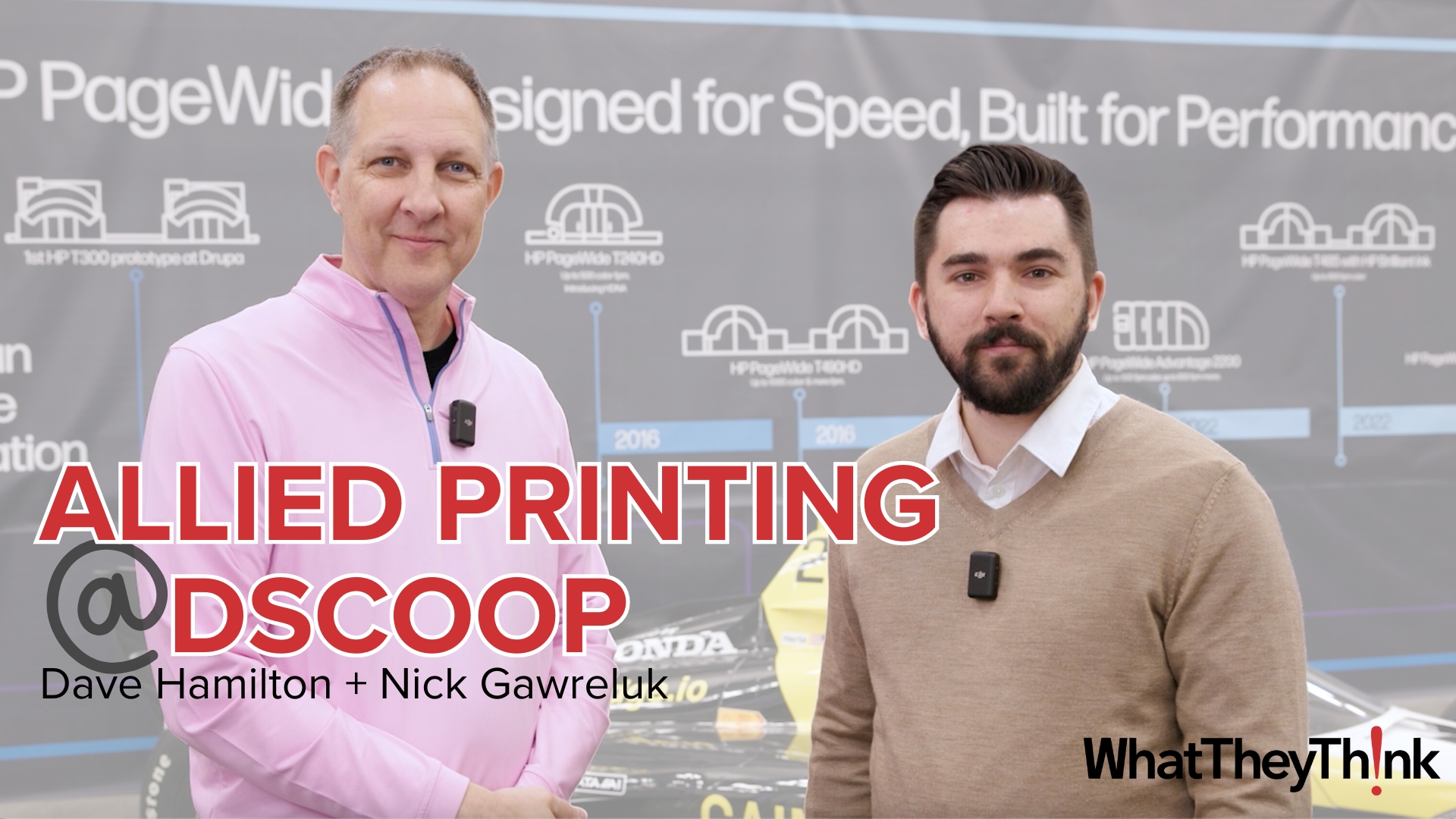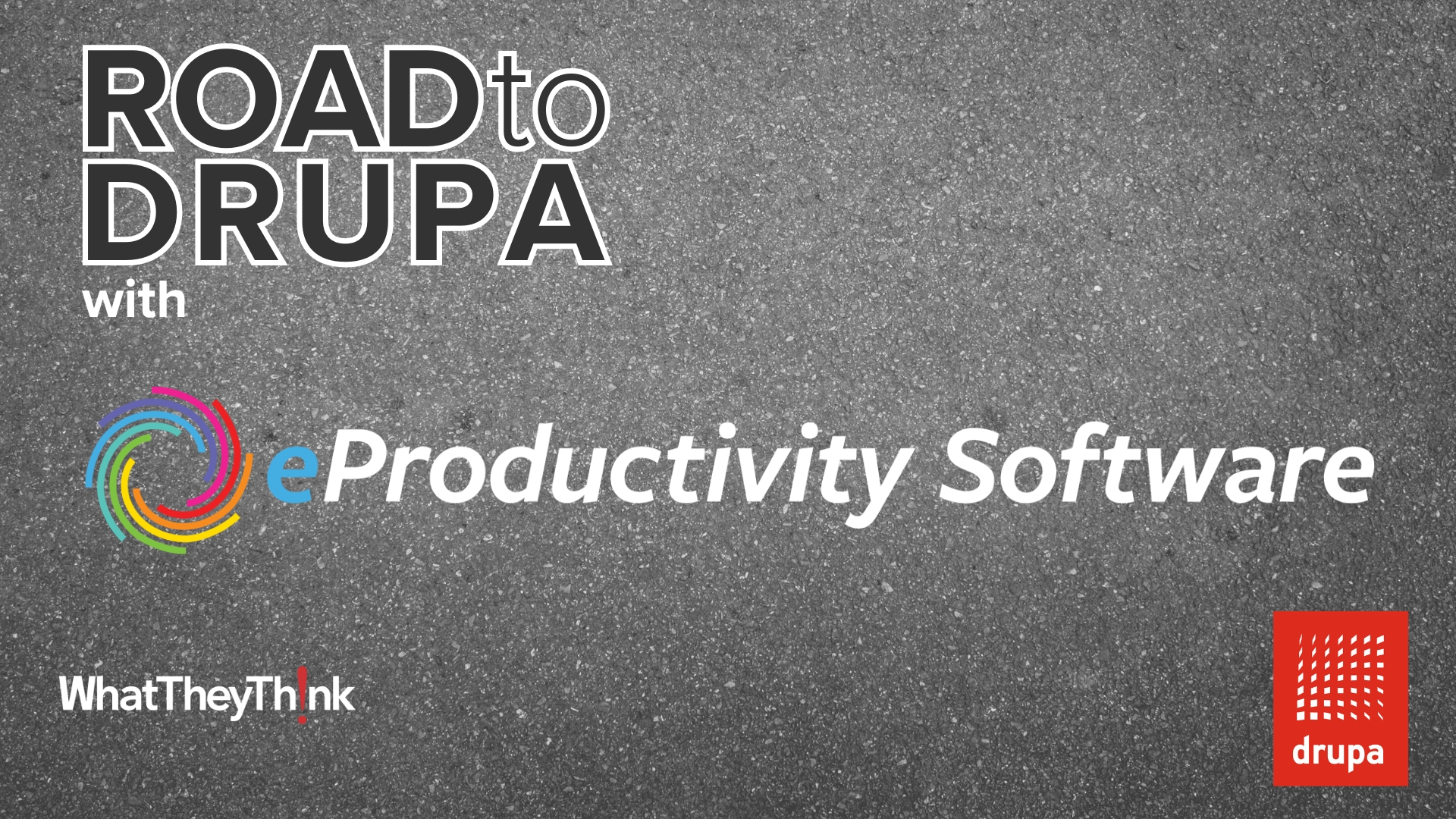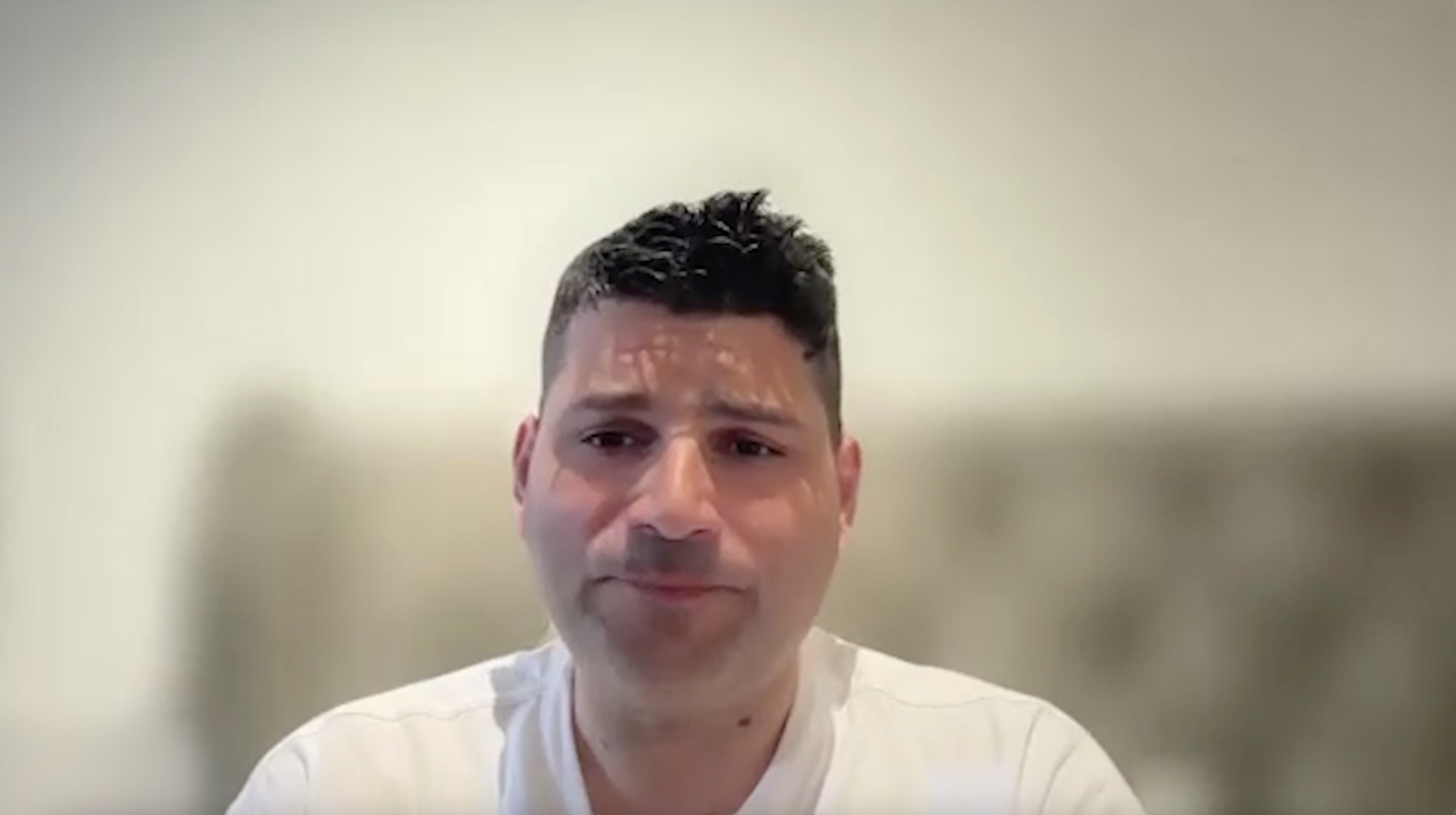I've got a problem. While I get a lot of my bills by email and pay most bills using my online banking service, there are still envelopes that come requesting payment. Those are mostly #10 envelopes containing the inevitable #9 envelope for payment.

Somehow I never questioned that it must take two envelopes to request and receive payment. Why should it?
Ann DeLaVergne, founder of
ecoEnvelopes, did wonder why. In fact, she questioned even more when she received one that said, "Reuse this envelope." But how?
Ann, who is a graphic designer, commercial photographer, and former organic farmer, thought it should be easy for people to reuse envelopes. She went to the office supply store, got some envelopes, some paper and glue and went to work.
Cutting and pasting is pretty simple, but how do you make perforations at your kitchen table? Easy! Use a sewing machine!
After experimenting with a variety of designs, Ann had a few sample envelopes in hand that she could send to friends. Ten friends around the country received her samples with a note that said, "What do you think? Were you able to open it easily? Please send this envelope back."
All of her samples came back and in good condition. The next step? Development of some prototypes that she took to the
Minnesota Office of Environmental Assistance, hoping they'd buy some. Instead the agency recommended that she apply for a waste reduction grant.
That grant launched ecoEnvelopes.
Much to Ann's chagrin, coming up with the design turned out to be the easy part. "I was familiar with publishing and direct mail as creative director for
Hazelden Foundation," said Ann, "but I didn't know anything about creating a new product for those applications."
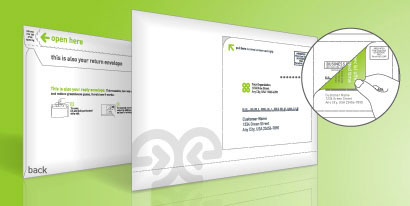
After receiving the grant, she partnered with a converter who manufactured her design to creating the first ecoEnvelope envelope design. Said Ann, "I worked with a converter to take my design and convert it into an envelope. They got it! They were very generous with their time and energy; they helped me learn the system."
Once the first design was finalized, getting it approved through the
US Postal Service turned out to be a multi-year challenge. Not only did the pieces have to go through all of the USPS' equipment with flying colors, some of the designs incorporated a tear-off patch that required a change in formatting.
The next step was to make sure that these new envelopes would work with the machines used by large volume mailers to put the contents into the envelopes. Ann stepped back and learned all about envelop inserting machines, from the very high end to desktop equipment.
While the final designs really required very little modification to function well in both the mail stream and the mail production process, "we had to go through the testing process to get the approval and verification," said Ann. "That was a longer process than I ever imagined it would be." The envelopes have been tested and are compatible with inserters from
Kern,
Pitney Bowes,
Böwe Bell & Howell,
MasterCraft,
Neopost and others.
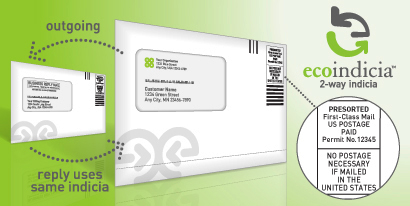
From the beginning Ann had an idea for a 2 WAY postage concept. It took two to three years of testing to get approval on the new 2 WAY ecoIndicia for reusable envelopes. In February 2009 the USPS published the changes to the
Domestic Mail Manual for this unique postage method for direct mail.
The third constituency - stakeholders - is the mail owners, the companies who actually use the envelopes. Ann is working with marketing professionals, mail operations people, and staff responsible for corporate sustainability to reach the right audience. Clearly there are lots of people in a company who are interested in a solution like this from a cost saving and "green" perspective.
There are seven patents pending listed in the
US Patent and Trademark database including designs for DVDs and envelopes that can convert from a larger size used to deliver documents down to a smaller reply envelope.
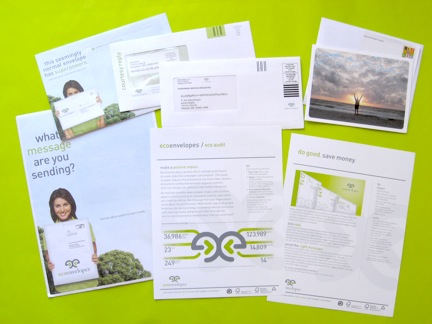
(Some of ecoEnvelope's products.)
Never one to sit still, Ann is "looking at the next generation of products. What are the materials? What are the main channels for mail? How can we address the parcel market?" How can we create product that is reusable to help reduce the impact on the environment? It comes down to really looking at how things are sent back and forth in any environment; how something is delivered and a response returned.
 Somehow I never questioned that it must take two envelopes to request and receive payment. Why should it? Ann DeLaVergne, founder of ecoEnvelopes, did wonder why. In fact, she questioned even more when she received one that said, "Reuse this envelope." But how?
Ann, who is a graphic designer, commercial photographer, and former organic farmer, thought it should be easy for people to reuse envelopes. She went to the office supply store, got some envelopes, some paper and glue and went to work.
Cutting and pasting is pretty simple, but how do you make perforations at your kitchen table? Easy! Use a sewing machine!
After experimenting with a variety of designs, Ann had a few sample envelopes in hand that she could send to friends. Ten friends around the country received her samples with a note that said, "What do you think? Were you able to open it easily? Please send this envelope back."
All of her samples came back and in good condition. The next step? Development of some prototypes that she took to the Minnesota Office of Environmental Assistance, hoping they'd buy some. Instead the agency recommended that she apply for a waste reduction grant.
That grant launched ecoEnvelopes.
Much to Ann's chagrin, coming up with the design turned out to be the easy part. "I was familiar with publishing and direct mail as creative director for Hazelden Foundation," said Ann, "but I didn't know anything about creating a new product for those applications."
Somehow I never questioned that it must take two envelopes to request and receive payment. Why should it? Ann DeLaVergne, founder of ecoEnvelopes, did wonder why. In fact, she questioned even more when she received one that said, "Reuse this envelope." But how?
Ann, who is a graphic designer, commercial photographer, and former organic farmer, thought it should be easy for people to reuse envelopes. She went to the office supply store, got some envelopes, some paper and glue and went to work.
Cutting and pasting is pretty simple, but how do you make perforations at your kitchen table? Easy! Use a sewing machine!
After experimenting with a variety of designs, Ann had a few sample envelopes in hand that she could send to friends. Ten friends around the country received her samples with a note that said, "What do you think? Were you able to open it easily? Please send this envelope back."
All of her samples came back and in good condition. The next step? Development of some prototypes that she took to the Minnesota Office of Environmental Assistance, hoping they'd buy some. Instead the agency recommended that she apply for a waste reduction grant.
That grant launched ecoEnvelopes.
Much to Ann's chagrin, coming up with the design turned out to be the easy part. "I was familiar with publishing and direct mail as creative director for Hazelden Foundation," said Ann, "but I didn't know anything about creating a new product for those applications."
 After receiving the grant, she partnered with a converter who manufactured her design to creating the first ecoEnvelope envelope design. Said Ann, "I worked with a converter to take my design and convert it into an envelope. They got it! They were very generous with their time and energy; they helped me learn the system."
Once the first design was finalized, getting it approved through the US Postal Service turned out to be a multi-year challenge. Not only did the pieces have to go through all of the USPS' equipment with flying colors, some of the designs incorporated a tear-off patch that required a change in formatting.
The next step was to make sure that these new envelopes would work with the machines used by large volume mailers to put the contents into the envelopes. Ann stepped back and learned all about envelop inserting machines, from the very high end to desktop equipment.
While the final designs really required very little modification to function well in both the mail stream and the mail production process, "we had to go through the testing process to get the approval and verification," said Ann. "That was a longer process than I ever imagined it would be." The envelopes have been tested and are compatible with inserters from Kern, Pitney Bowes, Böwe Bell & Howell, MasterCraft, Neopost and others.
After receiving the grant, she partnered with a converter who manufactured her design to creating the first ecoEnvelope envelope design. Said Ann, "I worked with a converter to take my design and convert it into an envelope. They got it! They were very generous with their time and energy; they helped me learn the system."
Once the first design was finalized, getting it approved through the US Postal Service turned out to be a multi-year challenge. Not only did the pieces have to go through all of the USPS' equipment with flying colors, some of the designs incorporated a tear-off patch that required a change in formatting.
The next step was to make sure that these new envelopes would work with the machines used by large volume mailers to put the contents into the envelopes. Ann stepped back and learned all about envelop inserting machines, from the very high end to desktop equipment.
While the final designs really required very little modification to function well in both the mail stream and the mail production process, "we had to go through the testing process to get the approval and verification," said Ann. "That was a longer process than I ever imagined it would be." The envelopes have been tested and are compatible with inserters from Kern, Pitney Bowes, Böwe Bell & Howell, MasterCraft, Neopost and others.
 From the beginning Ann had an idea for a 2 WAY postage concept. It took two to three years of testing to get approval on the new 2 WAY ecoIndicia for reusable envelopes. In February 2009 the USPS published the changes to the Domestic Mail Manual for this unique postage method for direct mail.
The third constituency - stakeholders - is the mail owners, the companies who actually use the envelopes. Ann is working with marketing professionals, mail operations people, and staff responsible for corporate sustainability to reach the right audience. Clearly there are lots of people in a company who are interested in a solution like this from a cost saving and "green" perspective.
There are seven patents pending listed in the US Patent and Trademark database including designs for DVDs and envelopes that can convert from a larger size used to deliver documents down to a smaller reply envelope.
From the beginning Ann had an idea for a 2 WAY postage concept. It took two to three years of testing to get approval on the new 2 WAY ecoIndicia for reusable envelopes. In February 2009 the USPS published the changes to the Domestic Mail Manual for this unique postage method for direct mail.
The third constituency - stakeholders - is the mail owners, the companies who actually use the envelopes. Ann is working with marketing professionals, mail operations people, and staff responsible for corporate sustainability to reach the right audience. Clearly there are lots of people in a company who are interested in a solution like this from a cost saving and "green" perspective.
There are seven patents pending listed in the US Patent and Trademark database including designs for DVDs and envelopes that can convert from a larger size used to deliver documents down to a smaller reply envelope.


